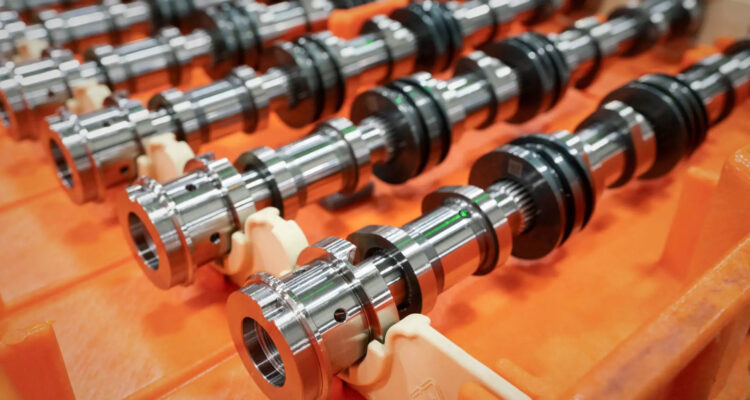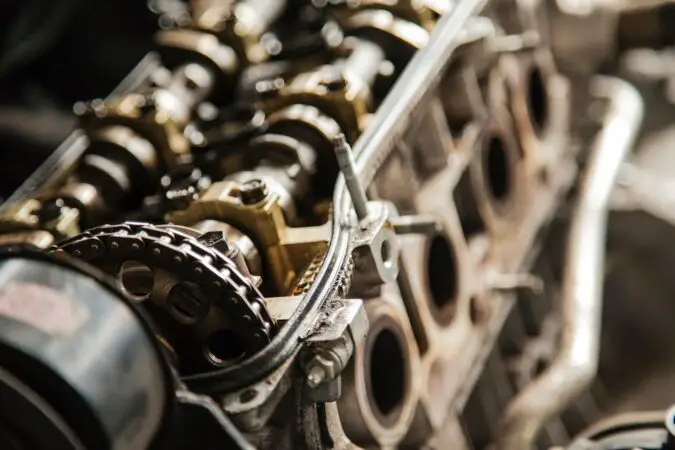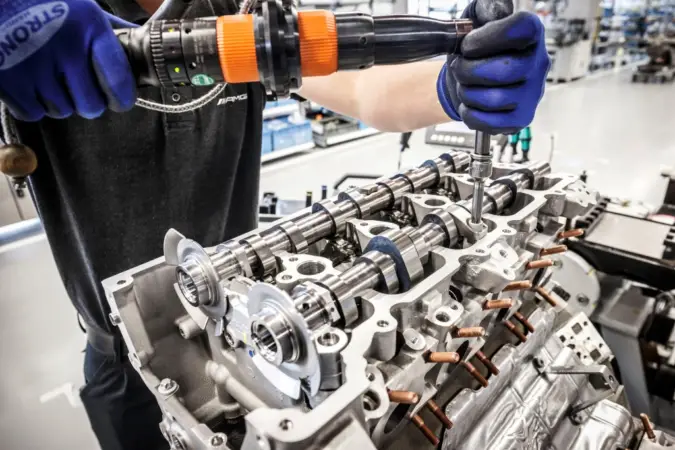The camshaft position sensor is one of those auto parts that many never give much thought to until it breaks. The camshaft position sensor tracks the motion of the camshaft and transmits that information to the engine control module. Your automobile might not start or operate smoothly if it is not properly operating.
A camshaft position sensor helps your engine run properly by regulating the amount of fuel that enters combustion chambers, the timing of the ignition, and the pollution output from tailpipes. Is driving with a damaged camshaft position sensor safe? Can you test or diagnose this problem on your own?
This article will go over the causes and symptoms of a malfunctioning camshaft position sensor. It will further explain how to test, identify and replace a faulty one, and what will happen if you ignore the issue.
- Camshaft Position Sensor
- Common Symptoms
- Bad Camshaft Sensor Codes
- Diagnostics
- Camshaft Sensor Replacement Cost
- Final Conclusion
- FAQs
Camshaft Position Sensor
The camshaft is a crucial part of a car’s engine. The valves for the intake and exhaust are primarily controlled by it. Additionally, it might power the power steering pump, oil pump, and gasoline pump. The camshaft and the crankshaft are identical in nomenclature, and because they cooperate, it might be challenging to tell them apart.
A timing belt or chain connects the camshaft to the crankshaft. This is crucial because the crankshaft controls the pistons’ positions as well, synchronizing the entire process. The synchronous process may be interfered with if the camshaft position sensor is faulty, leading to a variety of issues.
The camshaft position sensor is an electrical component that tracks the movement of a car’s camshaft and transmits information to the ECM. In order for the ECM to appropriately control the amount of fuel that enters combustion chambers, the timing of the ignition, and the emissions discharged from tailpipes, it needs this information.
Engines can produce more power while using less gas when spark plugs ignite air/fuel mixes at precisely the specified time.
Generally speaking, there are two categories of camshaft position sensors:
- Magnetic type or variable reluctance sensors- This sort of sensor often has two wires, which make it easy to recognize. The magnetic type generates its own sine wave signal of alternating current (AC) voltage.
- Hall effect type sensors- Three wires, one for the reference signal or power, another for the ground, and a third for a signal voltage supplied to the computer denote this type.
Make sure you are aware of the kind of sensors your vehicle uses. There may be a third shielded wire on some magnetic types of models that are used to reduce noise. Consult your car’s owner’s manual if necessary.
Camshaft Position Sensor Location
When you peek underneath the hood of your car, you can have a hard time finding the sensor. Typically, each automaker will designate a certain location near the engine to put the sensor. It could be close to the engine block, behind the cylinder head, or in the lifter valley of the car.
Also bear in mind that you can have many CMP sensors, depending on the model you have. If necessary, you can find and identify the sensor with the aid of your car service manual.
Camshaft Position Sensor Symptoms
Given that the camshaft controls one of the most crucial functions in the vehicle i.e determining the intake and exhaust rate, many symptoms may manifest if it becomes defective. If there is a problem with your camshaft position sensor, your car won’t break down suddenly.
You can continue to drive without it, but the performance of your car will gradually deteriorate. You can look out for the following symptoms to alert you to a problem so you can have it checked out before it gets worse-
- Check engine light
- Stalled engine
- Harsh starts or unable to start
- Rough idle
- Reduced engine power
- Low gas mileage
1. Check Engine Light
The appearance of a check engine light is the most typical sign of a faulty camshaft position sensor. As usual, it will be difficult to identify the issue until the light turns on. You should use an OBD2 scanner to check your automobile for any problem codes in order to gain a clearer picture.
You should take your car to a repair shop if you don’t have an OBD2 scanner. If at all possible, avoid using your vehicle while the light is on as it could result in further damage.
Depending on whether a qualified mechanic or someone equally qualified has given you the go-ahead, you might be able to drive the car to the shop if you are aware of the source of the check engine light.
The so-called “limp mode” may activate frequently. This safety function limits your car’s power and speed to safeguard all of its parts. Generally speaking, if the limp mode is activated, you can drive your car to the closest repair center. When you turn your engine on and off again, the limp mode may go away, much like the check engine light.
2. Stalled Engine
Engine stalling is a more dangerous but luckily less frequent symptom. You could experience this while parking or operating a vehicle on the road. The latter scenario carries a great deal of risk.
Avoid driving at all if your engine suddenly stalls. This issue arises when neither fuel nor air enters the combustion chamber at the proper time, preventing combustion from happening.
3. Harsh Starts/Unable To Start Car
The previous symptom is connected to this one. The sensor’s poor performance will make it difficult for the engine to start. This could be caused by a number of things, just like practically any other symptom. Other potential causes of a car not starting include a bad starter (which you can diagnose further by understanding how to tell if your starter is bad), a blocked fuel filter, a dead battery, and other issues.
4. Rough Idle
When everything is functioning properly, the driver won’t typically notice the car idling. On the other hand, a rough idle will be highly obvious while driving. Unsynchronous combustion in the cylinders is the cause of the rough idle if the camshaft position sensor is broken.
A bad fuel pump or EGR valve can also cause a rough idle. It’s critical to understand what creates the harsh idle, regardless of the cause. To find out, you might need a few extra tools and tests.
5. Reduced Engine Power
There are two instances where you could experience decreased engine power. Either the car is moving roughly and there is no message or dashboard light visible, or the reduced power is the result of the limp mode, which is used as a safety measure.
When idling or cruising, you can detect less engine power or only a decrease in engine speed. When accelerating, it may also manifest as vibrations. All of this is caused by the engine’s cylinders misfiring and having poor combustion.
6. Low Gas Mileage
An excessive amount of fuel may be delivered into the combustion chamber as the camshaft sensor gives the engine control unit erroneous information. In addition to injecting more gasoline, the combustion will also take place at a sub-optimal time, which will result in more unburned fuel and worse gas mileage.
Because this symptom develops gradually over time, it may be more difficult to detect. You should also be mindful of how often your car uses fuel.
Bad Camshaft Position Sensor
The timing of the engine may be thrown off if the camshaft position sensor’s signal is interfered with. As a result, the driver will have performance problems with their car, including misfiring.
The most frequent cause is a malfunctioning or damaged camshaft position sensor due to wear and tear. Other faults can be circuit-related, such as frayed wires or faulty connections, PCM errors, or a broken reluctor wheel for the camshaft position sensor. The sensor may also malfunction as a result of issues with internal engine timing components.
The cause of a bad camshaft sensor could also depend on the vehicle’s manufacturer. The problem may be caused by a short to ground in Audi cars or a problem with the ignition coil’s power output. In Toyotas, the issue could be the PCM itself or a fault with the circuit to the variable valve timing sensors on the left bank of the engine.
In GM vehicles, the problem may be brought on by incorrectly placed valve timing chains or faulty crankshaft or camshaft position sensors. Nevertheless, you can nearly always link the problem to valve timing issues. A malfunctioning PCM is typically the least unlikely cause.
Camshaft Position Sensor Code
Camshaft Position Sensor Code: P0340
A malfunction in the camshaft position sensor’s “A circuit” is indicated by the error code P0340. The underlying issue that caused the code can harm your car’s engine if you keep driving it. This kind of malfunction might result in major problems that need to be fixed right away.
The camshaft position sensor circuit’s electrical wiring is faulty, according to code P0340. Numerous other codes that are directly related to the camshaft of your car may also appear as a result of this problem. Additionally, there’s a chance that the PCM in your powertrain is harmed.
Replacing the camshaft position sensor alone won’t always fix your problems. Because there could be a number of other issues with your car in this circumstance. The P0340 code is logged by the PCM, which frequently causes the display of further P034X codes.
Even codes from P0011 to P0019 or P0335 to P0339 could appear if there happens to be an issue with the sensor. The check engine light will turn on for any of these codes, alerting the driver to a problem.
Error codes P034X are categorized as general powertrain codes. All makes and models produced after 1996 are subject to the same terms. All vehicles share the same problems with this code, although some specific models could need additional steps for diagnosis or repair.
The check engine light coming on in a car is the most typical sign of any fault code related to the camshaft. Other signs of these codes include harsh starts or failure to start. Additionally, an engine may sputter while running or stop entirely and refuse to restart.
When any camshaft problem codes are displayed, drivers may additionally encounter rough running, inadequate acceleration when driving, or misfiring.
Camshaft Position Sensor Bank 1
The P0341 error code denotes an issue with the bank 1 camshaft position sensor (CMP) signal. It’s possible that the signal from the CMP is not synchronized with the signal from the crankshaft position sensor (CKP). It might not be within the desired range or is not timed appropriately. You should also be aware that prolonged cranking periods can set this code.
Camshaft Position Sensor Code: P1345
The P1345 manufacturer-specific OBD code, which is related to the crankshaft and camshaft positions, deals with ignition issues. The code is related to particular car brands including Volkswagen, Lexus, Mazda, Toyota, and GM. Due to the many kinds of ignition triggers utilized, each manufacturer will have its own version of the precise definition of the P1345 code.
While some vehicles’ ignition systems employ equal arrangements of coils and spark plugs, others only use one coil for every two plugs. The camshaft is connected to the crankshaft by a chain, belt, or perhaps even gears, and the timing is either advanced or retarded. Although the camshaft can’t vary the rotating speed, it can occasionally change when its lobes open up particular valves.
To tell the PCM where the crankshaft is in relation to the top dead center (TDC) during the compression stroke of the first cylinder, all vehicles use a crankshaft position sensor (CKS).
The PCM then receives a signal from the camshaft sensor (CMS) indicating where the camshaft lobes are in relation to each cylinder’s valve opening. The PCM chooses the ideal fuel injector time using this data. When the correlation between the CKS and the CMS is more than one to two degrees out of whack, the P1345 code is set.
The P1345 code’s most frequent symptom is the instant appearance of the check engine light on your dashboard. Additionally, you should anticipate a rough idle and a possible engine misfire at RPMs greater than 1500. This occurs as a result of the PCM’s inability to calculate the proper fuel injector timing, which makes the engine run poorly.
The P1345 error code might make it difficult for your car to start and even cause it to stall. The P1345 error code needs to be handled seriously, and quickly.
Diagnostics
Make a visual inspection before testing the sensor or circuit wires. A CMP sensor’s ability to provide the necessary signal to the computer can be hindered by damage or contamination to the sensor or cable.
To avoid harming the sensor, cables, or connector, back probe the CMP sensor if possible. Another option is to unhook the sensor, attach a copper strand to each of the connector’s pins, and then replug it. During your tests, use the copper strands poking out of the connector as DMM connecting points.
If none of these options are feasible, you can use a pin to penetrate the sensor wires. To stop corrosion from penetrating the insulation and harming the wires, simply tape over the punctured places to fix them.
Don’t forget to check your timing belt or chain if you didn’t find anything wrong with your CMP sensor, connector, or wiring. This is especially applicable if you haven’t changed the belt in at least five years. A belt, chain, or related component that is defective, overstretched, or loose will prohibit the sensor from doing its duty.
Camshaft Position Sensor Test
A fairly decent Digital Multi Meter (DMM) can typically read both sides of the wave when the CMP sensor signal is idle due to its low frequency. As a result, you might notice fluctuations in the voltage signal on your DMM display.
CMP sensors of the magnetic type generate their own AC (sine wave) signal. A digital multimeter with the ability to measure AC (alternating current) voltage is required. In a hall effect type sensor, the highest and lowest voltage values are represented by a squared, digital signal.
Utilize the digital multimeter with the ability to measure either the direct current (DC) or alternating current (AC) voltage depending on the camshaft position sensor you have. Additionally, you will want the appropriate electrical values for the kind of sensor you are using. Your car’s repair manual might have this information.
You can back-probe the wires through the electrical connector on some sensors. But if you can’t do that, try unplugging the sensor connector. If so, connect a copper wire strand to each connector terminal. After that, reconnect the connector such that the two strands protrude through the casing.
Another option is to use a pin to penetrate each wire. However, take care during your experiments to avoid shorting out the connections. If you decide to use this last technique, use electrical tape to conceal the pinholes on the wires. This is in order to prevent rust from seeping into the wires.
Camshaft Sensor Replacement
Your camshaft position sensor will need to be replaced if it turns out to be defective. You could even do it yourself if you have previous expertise working on cars! The sensor can be changed with little difficulty, but it could be hard to get to. This means that replacing it might require some patience.
If you do it yourself, it might only cost you $20 or $30. It is extremely possible that you will be required to pay between $100 and $250 when you see the mechanic. You can choose to change the sensors yourself for less money because there is a sizable labor difference and cost involved.
Finding and replacing the sensor inside the engine isn’t too difficult, and you’ll probably save some money if you do. It is reasonable to assume that the cost of buying is low.
Typically, changing the CMP sensor is a simple procedure. To access the sensor, you might need to remove one or more components, depending on the model of your individual car. Then, remove a mounting bolt or two by unscrewing them.
To ensure you obtained the right replacement, compare the new sensor to the old one before installing it. Consult your car’s owner’s manual if necessary.
Camshaft Sensor Price
A new camshaft sensor will typically cost between $90 and $140. You should expect to pay between $70 and $100 for labor. The cost is influenced by the type of car and the repair facility, just like with any other replacement. Dealerships and premium brands nearly always cost more money. In both cases, you should budget between $160 and $240 for a camshaft position sensor replacement.
Final Conclusion
Although it is small in size, the camshaft position sensor is crucial for the engine of your car. It guarantees that fuel and air igniting in the engine’s combustion chamber at the proper moment. It works closely with both the engine control unit and the crankshaft. Numerous symptoms could manifest if the sensor is malfunctioning.
A check engine light will typically come on. Poor gas mileage, a rough idle, engine stalling, and a lack of engine power are further symptoms. The symptoms could be difficult to distinguish from one another. It is typically advisable to leave your car with a qualified mechanic and let them take care of the issue.
Frequently Asked Questions
What To Do After Replacing Camshaft Sensor
Following changing the sensor, don’t forget to use a diagnostic scanner to clear the fault codes that were saved in the engine controller after the failure. A new sensor should allow the engine to run correctly again if installed properly. In the case of a failure, the sensor itself is not replaceable or repairable.
What Happens When A Camshaft Sensor Goes Bad
A faulty camshaft position sensor starts to slow down data transmission. Your car will splutter, accelerate slowly, lack power, stall, or even shut off if the fuel delivery and ignition timing are out of sync by a few milliseconds.
What Does A Camshaft Sensor Do
The engine control can precisely pinpoint the location of the crankshaft drive thanks to the camshaft sensor. Calculating the ignition point and injection point, among other things, requires this information.
Where Is The Camshaft Position Sensor Located
The Camshaft Position sensor includes a cylindrical part that inserts into the cylinder head of the engine, where it is generally positioned. The timing cover or the side of the block with a cylindrical section that inserts into the block are the typical locations for the crankshaft position sensor.
How To Replace Camshaft Position Sensor
Open the hood of your parked car on a flat surface. Unplug the negative battery cable should be unplugged. Every time you work with sensors or electrical components, you should do this. The camshaft sensor may be taken out and replaced from underneath your car, but you can also do it from the top by taking off the air filter housing.
What Causes A Camshaft Position Sensor To Go Bad
Your camshaft sensor could malfunction for a number of reasons. These include oil and filth in the engine, water damage, faulty wiring, and overheating. Taking proper care of your car is the most important thing you can do to prevent this.
How Long Does It Take To Replace A Camshaft Sensor
One of your car’s most crucial components, the camshaft sensor is so important that if it breaks, you probably won’t be able to drive at all. Fortunately, the part is reasonably priced in comparison to many other car parts, and a mechanic can replace it in just a few hours.
How Much Is A Camshaft Sensor
Depending on whether you have the camshaft sensor replaced professionally or on your own, the average cost might range from $105 to $240.










